The flag
The state’s flag dates from the days when it was a self-governing British colony with its own navy. In 1865, the then Governor of the colony of Queensland, the Honourable Sir George Ferguson Bowen GCMG, was directed by the Admiralty in London that all vessels in service of the colony, except commissioned vessels of war, should fly the blue ensign bearing the seal or badge of that colony. Queensland, which did not yet have a badge for the flag, submitted a design for a badge to London.
Years later, in 1875, the then Queensland Governor received a number of drawings of the badges of several colonies from London. They showed badges of several colonies which were proposed to be inserted in the Admiralty flag book. The Governor was asked to certify that the correct badge was shown for Queensland.
It showed a picture of Queen Victoria’s head, facing right, on a blue background with a white band, with the word “Queensland” on top.
The Queensland Government replied to London that it would be too hard to adequately reproduce the head of the Queen on a flag, and submitted an alternative design of a Royal Crown on a Maltese cross.
This was approved by the Admiralty in 1876 as the future badge for the colony. It was to be put on the British blue ensign as the flag for government vessels.
The colour reference is:
- Blue: PANTONE® 280,
- Red: PANTONE® 185, and
- Light Blue: PANTONE® 298.
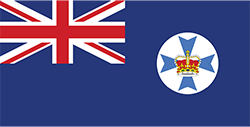
The Coat of Arms
Queensland’s Coat of Arms is the oldest in Australia and was granted to the colony by Queen Victoria in 1893. It was the first Coat of Arms assigned to any British possession since King Charles II granted Arms to the island of Jamaica in 1661. As of August 2012, the Queensland Coat of Arms has been used as the government’s corporate logo.
The shield on the state’s Coat of Arms symbolises Queensland’s primary industries: a sheaf of wheat, the heads of a bull and a ram, and mining which is represented by a column of gold rising from a heap of quartz.
On the crest, the state badge (of the Royal Crown and Maltese cross) is framed by 2 stalks of sugar cane. The badge was incorporated in the Queensland Coat of Arms in 1893. On the Coat of Arms is Queensland’s state motto, Audax at Fidelis, which means “Bold but Faithful”.
In 1977, during the Queen’s Silver Jubilee year, the Coat of Arms was given a more modern appearance when Queen Elizabeth II granted the inclusion of supporting animals, the brolga and the red deer. The brolga is one of Queensland’s most distinctive birds and symbolises the native population. The red deer was introduced from the royal herds near London and represents the old world.
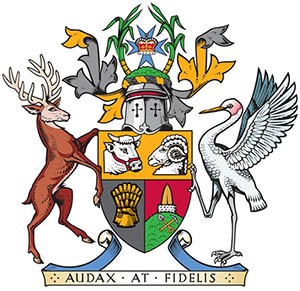
The badge
The badge of Queensland is officially described as “On a Roundel Argent, a Maltese Cross Azure surmounted with a Royal Crown”, and was adopted as part of the state flag on 29 November 1876. It was designed by William Hemmant, the then Queensland Colonial Secretary and Treasurer.
It is not known why this was chosen as a suitable badge. However, it is interesting to note that a Maltese Cross is the final stop on the legend band around the Great Seal of Queensland (1859). The Royal Crown also appears on this seal. The Royal Crown has been altered slightly since the badge was first adopted under Queen Victoria’s rule, as succeeding monarchs have preferred different interpretations of the Crown. It was last altered in 1963, after Queen Elizabeth II decided to reproduce the Crown during her reign.
In 1893, the badge was incorporated into the Queensland Coat of Arms.
The colour reference is:
- Light Blue: PANTONE® 298.

The floral emblem
The Cooktown orchid
Queenslanders voted the Cooktown orchid their favourite flower in a Government poll in 1959, during celebrations to mark the state’s centenary. Soon after, it was proclaimed Queensland’s floral emblem.
Purple, with sprays of up to 20 flowers on each stem, the Cooktown orchid clings to trees or rocks in Queensland’s far northern tropical rainforests.
Each plant flowers for up to 6 weeks in autumn and winter. Individual flowers grow to about 4 centimetres across. While usually purple or mauve, white or white-spotted flowers have been found.
The Cooktown orchid is relatively easy to grow on the trunks of trees in frost-free gardens along the state’s coast, but it needs a well-drained sunny position protected from winter winds.
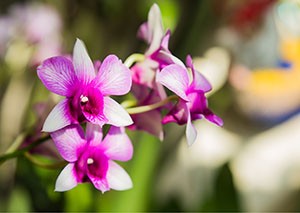
The animal emblem
The koala
The koala became the faunal emblem of Queensland in 1971, after a newspaper poll showed strong public support for this endearing marsupial.
The koala is a favourite animal symbol of Australia for millions of people around the world. They are captivated by its broad sleepy face, big fluffy ears, leathery nose, small yellow eyes and tailless stout grey body.
While people think the koala is shy, colonies often thrive near built-up areas, provided there is enough bushland to create a suitable habitat.
The koala can be found throughout eastern areas of Queensland, south of Townsville. As a marsupial, the koala carries its young in its pouch, which opens backwards unlike other tree-dwelling marsupials. Bean-shaped, newly born young crawl through their mother’s fur to her pouch, where they are suckled and kept safe for about 6 months.
Most koala activity is at night when they actively forage for choice leaves. As the species rarely drinks water, the name ‘koala’ originates from the Indigenous word meaning ‘no drink’, since it usually gains sufficient moisture from dew and their diet of oily, eucalyptus leaves. To help them digest eucalyptus leaves, they have a 7 metre-long digestive tract.
Young koala cling to their mothers back until they are about a year old. Koalas live for about 20 years.
In February 2022, koalas were declared an endangered species under Commonwealth law in Queensland, New South Wales and the Australian Capital Territory. Despite conservation efforts, koalas continue to be threatened by disease and loss of natural habitat.
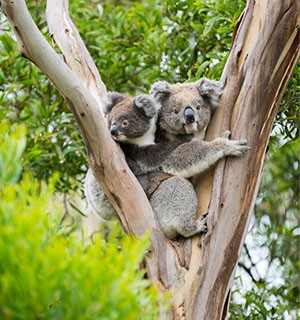
The bird emblem
The brolga
The brolga has featured on Queensland’s Coat of Arms since 1977 and has been the state’s bird emblem since January 1986.
Of the 14 species that comprise a worldwide family of cranes, brolgas (Grus rubicunda) are the only species native to Australia. Imagine 2 feathered creatures on stilt-like legs. Picture them in a courtly dance, bowing and bobbing to each other with grace and dignity, jumping into the air together, pirouetting and prancing back and forth. Imagine their enormous wings spreading gracefully throughout the dance and you’ll start to get an impression of the brolga in their intricate dancing displays at mating time.
Brolga stand more than a metre tall and their outstretched wings can measure 2 metres across. The adults are mainly light grey and have a long, thin neck, a bare head and a patch of striking red coloured skin on the lower pan of their head below the eyes. Brolga are Australia’s only native crane and they can be found along Queensland’s coast from Rockhampton to the Gulf of Carpentaria.
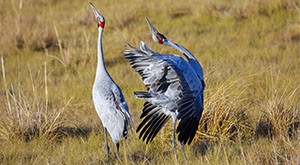
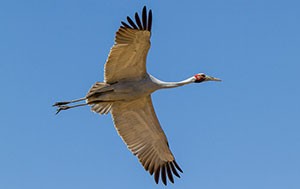
The fish emblem
The Barrier Reef Anemone fish
The Barrier Reef Anemone fish was officially named as Queensland’s aquatic emblem in March 2005, following the public’s nomination of the species as their preferred representative for Queensland.
As the official aquatic emblem, the Barrier Reef Anemone fish symbolises Queensland’s close association with the coastline and water.
The Barrier Reef Anemone fish is commonly found in the northern region of the Great Barrier Reef, just off the coast of Queensland.
Anemone fish grow to 12 centimetres in length and are known to live amongst large, tropical sea anemones. The species are distinguished by their brown‑orange colour which features a pure white tail and 2 white bars across the head and body.
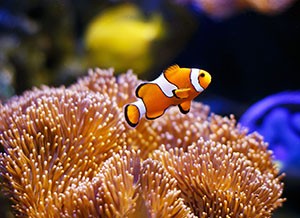
The gemstone emblem
The sapphire
The sapphire has been mined in central Queensland since the 1870s and became the state’s official gemstone in August 1985.
Second only to diamond in its hardness, the sapphire is a clear gem and comes in many colours other than the traditional blue. These include deep indigo, yellow or green. The rarer pink sapphire is better known as a ruby.
The sapphire is a natural variety of corundum, or aluminium oxide, which has been highly prized as a gemstone for almost 3,000 years.
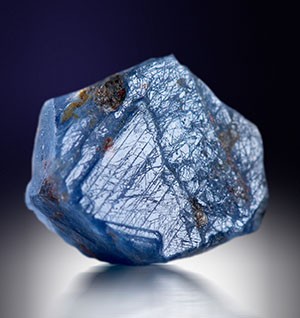
The state colour
Maroon
Although the use of maroon to represent Queensland has a long history, maroon was not officially named Queensland’s state colour until 2003.
Maroon is particularly prominent in Queensland sport and is one of the official colours of the rugby league club, the Brisbane Broncos.
While the Governor in Council elected a particular shade of maroon, Queenslanders continue to wear all shades of maroon to show the spirit of the state at sporting and other events.
The colour reference is:
PANTONE® 202C, and
PANTONE® 201U.
For further information on the symbols of Queensland, and for permission to reproduce the state badge and Coat of Arms, please contact:
Protocol and International Engagement
Department of Premier and Cabinet
PO Box 15185
City East QLD 4002
Phone: 07 3003 9253
Email: protocol@premiers.qld.gov.au
